Ruthless politicians, brutal murders and omnipresent petty crimes. Such a picture of Scandinavia emerges from the pages of crime novels. Literary fiction or replication of the truth of police files?
When reading Scandinavian crime novels, the reader may get the impression that Sweden, Denmark or Norway are countries where crime has always been a serious problem. Especially the small towns described in the pages of the novels seem to be a perfect scenery for a crime. Small, isolated from the world, rich communities in which one dark secret chases another, and the sins of the past have still not been settled ... But is the situation in northern Europe, for example in Sweden - the homeland of Stieg Larsson, author of the Millennium trilogy - really there? that scary?
Of course, as in any country, problems with law-keeping arise in the cradle of the dark stories that are popular today. However, if you look at the homicide rate, it is not higher than in other countries. Since 1990, the number of detected crimes of this type has systematically decreased. From around 120-130 per year it decreased to 80-90. This is not the worst result in a country of ten million. Only in recent years has there been a slight increase.
In turn, in Norway, with a population of five million, the murder rate is around 0.56 per 100,000 inhabitants . For comparison - in Poland, which is inhabited by less than forty million people, 1048 homicides were reported in 1999 - as much as ten times more than in Sweden. Perhaps the country on the Vistula River should become the new Mecca for lovers of thrill novels?
Bloody side of the Scandinavian medal
In some respects, Scandinavia does not lack inspiration for authors describing bloodthirsty criminals. At least a few famous serial killers were active there. One of them was Arnfinn Nesset, a nurse in a Norwegian nursing home. He was convicted of killing 22 inmates. However, it is suspected that the number of his victims could have been much greater, reaching as much as 138 people!
A similar model of operation was adopted by the Swede Anders Hansson. This Malmö hospital worker poisoned 27 patients between October 1978 and January 1979. In turn, the Finn Juhani Aataminpoika in 1849, while wandering around the country, killed 12 people.
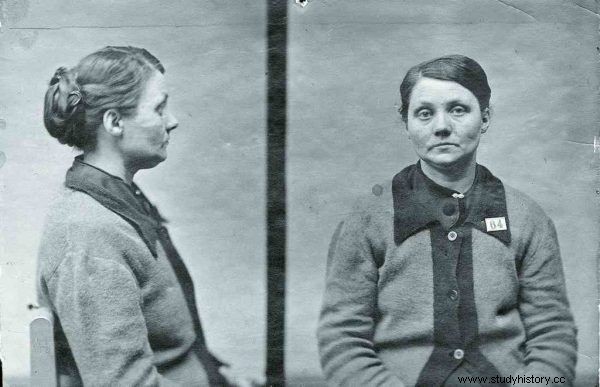
Every country has serial killers. This does not mean, however, that the general state of crime in a given country can be assessed through the prism of individual psychopaths. In the photo, Hilda Nilsson is considered one of the most famous Swedish serial killers.
The number of crimes committed by another criminal, Matti Haapoja, is not exactly known. Various sources attribute to him from 3 to more than 20 homicides. It is difficult to find exact data, because some of the murders he is accused of were committed during his exile in Siberia. He stayed there in the years 1880-1889.
After his capture in 1890, the Finn was imprisoned. His trial was widely commented on in the press and even found its way into the canon of local legends. One of his victims was the prostitute Maria Jemina Salonen. Why did she have to die? The criminal himself, when asked about the cause of her death, was unable to give a specific reason ... Ultimately, Haapoja was sentenced to life imprisonment. In 1895, after several unsuccessful escape attempts, he committed suicide.
It is worth adding that not only adults fell victim to serial killers. Bruks Street Angel Factory by Hilda Nilsson killed eight children. She ended up just like the Finnish predecessor. To avoid execution, she hanged herself on a linen tablecloth tied to the door of a cell in a prison in Landskrona. Its Danish counterpart was Dagmar Overbye. It deprived 9 to 25 children from the age of 1913 to 1920. Among them, one was her own. The little ones were drowned, strangled, and even… murdered with the help of a masonry heater.
Representatives of the clergy also went down in the history of Scandinavian crimes. Anders Lindbäck, a nineteenth-century Swedish vicar, killed three people. The reason was especially interpreted mercy. The priest wanted to solve the problem of poverty in his community. So he poisoned the wafer and wine spread around the houses with arsenic.
In the last decade, however, all these criminals have been overshadowed by Anders Breivik. In 2012, during the attack on the island of Utøya, he killed 69 people. Another 8 were killed in the bomb attack he had organized.
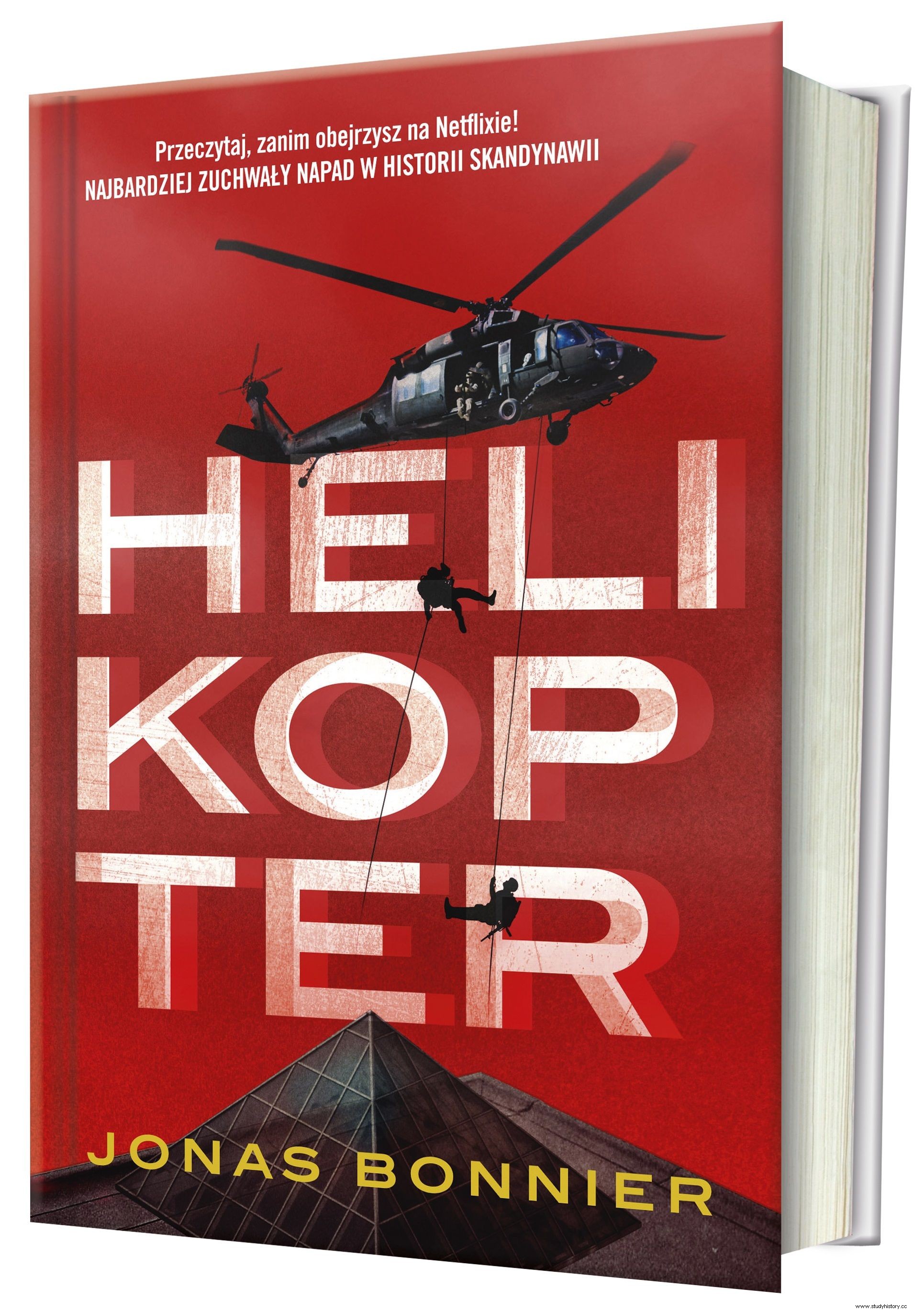
The article was inspired by Jonas Bonnier's novel " Helicopter "(Znak 2018) was created on the coffee of long hours of conversations with people who made the heist of the century.
There are many examples of this type. Should a conclusion be drawn on their basis, however, that Scandinavia is the home of mass-produced psychopaths? Not necessarily. After all, there are cases of cruel crimes in every country. Meanwhile, crime in the North of the Old Continent may look completely different.
Police - brilliant detectives or a colossus on clay legs?
An important factor in ensuring the safety of citizens is, of course, the Scandinavian police. Even in the literary mirror, it does not always triumph over criminals. As it is in the pages of the novel, there are also investigators who come out unscathed from any oppression and solve every problem.
In fact, Northern detectives are not much different from their colleagues in other countries. And as it happens in life, professionalism and sincere intentions are not always enough to bring the matter to an end. This was the case with the vampire from Atlas, a district of Stockholm, who murdered a 32-year-old prostitute in 1932. The blood was gone from the victim's body. Suspected was removed with a sauce ladle. The mysterious killer has never been caught.
The Norwegians also have some unresolved cases to their credit. One of them is the death of an unidentified woman in the Isdalen Valley. Her body was discovered by accident in 1970. It is established that she died from extensive burns. It was also discovered that she had previously traveled around Europe using as many as nine false identities. She probably spoke several languages. But who was she really, and why did she die? Until today it is not known.
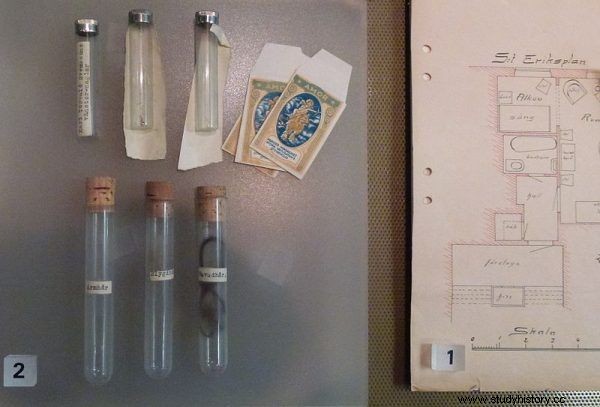
Despite a few suspects and a very long investigation, the case of the "Atlas Vampire" has not been solved to this day. The photo shows a fragment of an exhibition at the Police Museum in Stockholm (plan of the victim's apartment and evidence samples).
As everywhere else, in Scandinavia there are also sometimes murders of law enforcement officials. In 1999, two Swedish policemen were shot in Malexander. Robert Karlström and Olov Borén died after a bank robbery in Kisa. The case was spiced up by the fact that the crimes were committed by well-known neo-Nazis.
It is no coincidence that the environment of the extreme right appears more and more often in the pages of the novel. More than one racially motivated murder has been committed in recent decades . In 2001, Benjamin Hermansen, whose father was born in Ghana, was stabbed to death in Norway. The murders were perpetrated by members of the neo-Nazi group Boot Boys. In 1995, John Hron, a 14-year-old boy from a Czech family, was murdered in Sweden.
Politics grown on blood?
And what about the ubiquitous - at least if you believe the crime stories - politicians' involvement in criminal scandals? Knowing the dirty doings of high-ranking officials and knowing that privileged groups go unpunished, many of the heroes of the novel do not trust law enforcement agencies. This is the case with Lisbeth Salander from the aforementioned "Millennium" trilogy or Kimmie from "Pheasant Killers" by Jussi Adler-Olsen.
It is true that Sweden is the only country whose prime minister and minister of foreign affairs have been murdered in the last hundred years. The head of government, Olof Palma, was shot dead in 1986 in the very center of Stockholm. Two shots in the back were fired at him. The killers and the motives of the crime have not been discovered to date. In turn, the head of the Ministry of Foreign Affairs, Anna Lindh, was fatally stabbed in 2003 by a Swede of Serbian origin - Mihajlo Mihajlovic. The perpetrator stated that "the voices in his head" pushed him to do so.
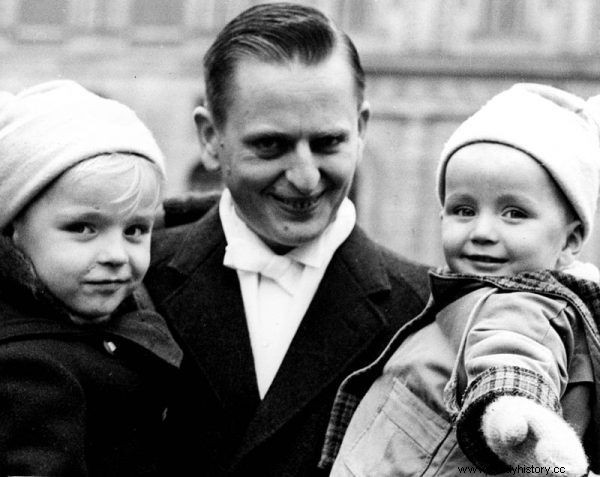
Prime Minister Olof Palme (pictured with the children) was fatally shot in 1986. Despite the huge efforts of the police, the circumstances of his murder have not been clarified to this day.
Of course, Scandinavian politicians are not saints, as evidenced by the Swedish IT scandal in 2017. But it must be admitted that corruption is very low in the North. In 2016, the largest sentence for a Swedish official was ... 3.5 years in prison! In Norway, the problem is even smaller, although this was not always the case. 2008 turned out to be particularly problematic, when the country took 14th place in the Transparency International ranking . It currently ranks in the top five.
However, politicians in the region faced other challenges in their own time. Freedom of speech or assembly was not always protected there. In 1931, five people died from bullets by the Swedish army. It was called upon to maintain order during a strike by workers at a pulp mill in Långrör. As a result of a misunderstanding, the unit fired a shot at the demonstrators. Among others, Eira Söderberg, a 20-year-old observer, was killed by bullets.
Immigrants - old / new evil
Nowadays, the authors of detective stories more and more often describe the problems resulting from the influx of people of foreign origin. Does this really affect the crime rate?

The article was inspired by Jonas Bonnier's novel " Helicopter "(Znak 2018) was created on the coffee of long hours of conversations with people who made the heist of the century.
Not necessarily. After all, the number of crimes and offenses committed depends on many factors. In the case of Scandinavia, the 1980s were the worst in this respect - then there were much fewer immigrants than today. From the point of view of the authorities, domestic criminals were a bigger problem than guests from abroad. People like the Tveit gang, a group of 5-10 Norwegians that has grown over the years to the size of a real mafia.
At around this time, however, the borders were opened to more people of other nationalities. Immigrants were not a new phenomenon - people from many directions, including Eastern and Southern Europe, had been fleeing the North for a long time. But only now foreigners have appeared in such numbers. No wonder that other groups similar to the Tveit gang were already led by people of foreign origin. Foreigners also started to appear more frequently in the police statistics.
Corpse? Probably on paper…
So how much truth is there in Scandinavian crime fiction? It can be said, perversely, that the more they conquer the world, the lower the real crime rate. The most difficult, as elsewhere, was the post-war years, when Scandinavia saw an increase in the number of violations of the law . Later, however, the situation stabilized and it only got better. Today, relatively small differences in the living standards of individual social classes and well-functioning law enforcement agencies mean that in the Scandinavian countries most bodies can be seen ... on paper.
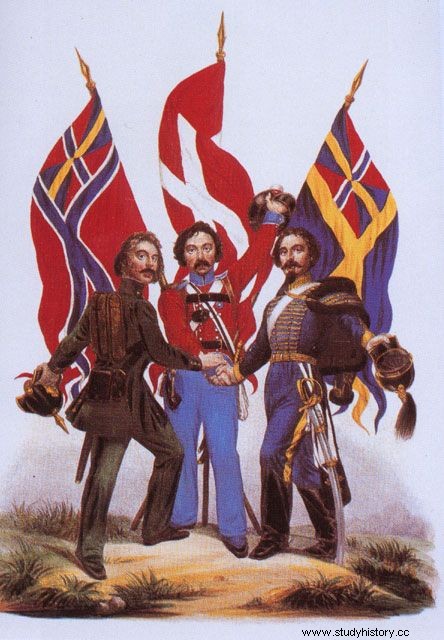
The influx of immigrants is a problem that affects all countries today. In Scandinavian crime novels, however, they are very often presented as a source of crime. The picture shows a Scandinavian propaganda poster.
This does not mean, of course, that the North is a land of honey and milk. There are also enclaves where crime is very high. A particularly bad streak is Norway's capital city of Oslo, which has been hailed by one of the guides as "the Scandinavian capital of crime".
Crime fiction by authors such as Stieg Larsson, Camilla Läckberg or Henning Mankell is undoubtedly one of the greatest phenomena of recent years. While to some extent they reflect the reality of the cold countries of the Peninsula, it must be remembered that the events described in them are primarily a product of the literary imagination.
Inspiration:
The article was inspired by a novel by Jonas Bonnier " Helicopter , based on real events." ”(Sign 2018). The writer reached out to the men who organized the most audacious robbery in Scandinavian history. His story is the result of many hours of conversations with daredevils, and each side brings new twists and turns, until the surprising finale.
A true story based on the most audacious robbery in Scandinavian history:

